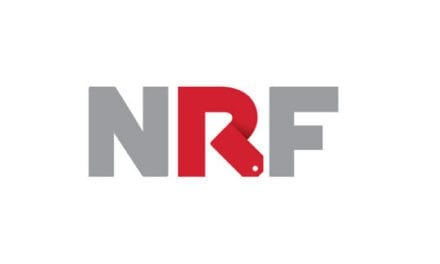By Fred Whitaker
Everyone loves a deal. Deals are intellectually challenging, exciting and provide the allure of dramatic growth. It can take years of hard work to produce the same revenues and profits you get from a great purchase.
Yet, the synergy expected from the acquisition often doesn’t materialize. In my 23 years of experience, I have found that the preparation entrepreneurs put into their existing operations often gets replaced by the passion for the deal. My point in this article is not to reduce the passion, but rather to insert the same preparation and process that you do for daily operations. Proper planning prevents poor performance!
For acquisitions, I believe the proper planning has three distinct phases:
- Operational excellence, not only in the target but the acquirer and a plan to continue both
- Due diligence that is truly diligent. Financials alone are not the totality of due diligence. Our willing suspension of disbelief should be left for action adventure movies.
- Deal structuring that works for everyone. Structures should not only focus on how to get the deal done, but how to ensure the future success.
Most people in the heat of a deal focus on the structure, but I encourage you to do that after the other two.
Operational Excellence.
For twenty years, from the dawn of the M&A era in the 1980’s to the financial crisis of 2008, the catch phrase for those acquiring was “market share.” Entrepreneurs looked to increase market share through acquiring another favorite cliché, the “bolt-on.” I’ve got a great business; I’ll grow my market share by bolting on one competitor after another. Profits will grow because there will be synergies that cut overhead. Instead, what happened as deals matured and the economy slowed was that many businesses found that the “bolt-ons” didn’t really fit in terms of products and services. Operational issues in the main business and the acquirer were amplified by putting them together, no one took ownership of the deal and the economies of scale didn’t come through.
During the last 5 years, businesses have had to concentrate on their “core” to survive. My observation is that those who acquire well always concentrated on their “core.” If your core is not as operationally excellent as it should be, throwing another business on top of it will not make things better — it will make things worse and potentially destroy what you already have. Only once you are operationally excellent will you and your staff truly have the time to dedicate to integrating an acquisition.
Conversely, entrepreneurs often look at competitors in distress or competitors where the operators wish to retire for their acquisition targets. The thought process is that economies of scale and synergy are easier where you can pick up profits in making the target operationally like you, and/or you can run it without the cost of the operator.
Interestingly, the flaws in a distressed target often infect the host, and people forget that operating companies need operators to be successful. Ironically, often the unique market niche or profitability of the target was driven by the operator that is leaving. Internally, you need a deal champion to take responsibility and be held accountable to the integration. Externally, that champion needs to become the mentee of and be trained by the operator leaving, so that as much of the value you are buying is harvested. Otherwise you will have staff that never accepts the deal but through a “soft yes” and a new division that is rudderless. The deal champion has to be the new operator.
Another issue in preparation is truly identifying whether the acquisition’s products and services are the same as your core, adjacent to your core or ancillary to your core.
Too many acquisitions were considered just “bolt-ons” when what they did was product adjacent or product ancillary. Without “tribal knowledge,” product adjacent and product ancillary acquisitions need the operator to stay in order to be successful and not detrimental to existing operations.
Due Diligence
Once you know that you are operationally excellent enough to bring on an acquisition, and you’ve provided for operational issues with a champion, you have to really look at what you are buying. It may appear that I am stating the obvious, but so many deals give too little attention to due diligence. You have to be diligent in your diligence. I have been involved in many deals where all that was looked at was the financial statements and tax returns. A cash flow model was built, a price was offered and accepted and a deal closed only to find out later the target was a mess and should have been bought at a lower price or not at all.
In my due diligence list, financial information is a significant section, but it’s just one of three categories. Legal and operational information are the other two major sections. Items that are out of whack in these sections often have a time bomb effect and can dramatically affect financial performance once the force of the operator’s personality gluing things together is gone. If you would like my list, please contact me at, [email protected].
Due diligence is also more than just a list, and checking the boxes. I’ve seen people ask for a lot of information then look at half of it. The true value in due diligence is the puzzle pieces you put together and the analysis you undertake with the information. Too often people ignore red flags because they are in love with the deal. They willingly suspend their disbelief. That is great for watching a movie like Pacific Rim or the Mummy, but not in buying a business. Allow the red flags to paint a truer picture of the target, instigate more questions and even encourage yourself to seek concessions or walk from a bad deal.
Deal Structures that Work for Everyone
Now that we are operational excellent, have a champion to hold accountable, and we know all the pitfalls, we can concentrate on deal structure. A deal by its very nature must be a win-win for both sides to feel good. But counter veiling interests are hard to bring together. Sellers want to sell stock for capital gains treatment and to walk from liabilities. Buyers want to buy assets so they can depreciate them — giving the seller recapture — and liabilities are left behind with the Seller. But bringing these opposing interests together is just one aspect to making a great deal. Any structure should not only merge these interests, but also tie both parties into the success of the business going forward. The classic technique is for the seller to take back note with an earn-out component, but it’s not the only way.
If you want a seller to consider an asset sale, offer a consulting agreement for prior owner to a new entity combined with a defined benefit plan. While it helps you to have the deductible consulting agreement, it also ties the seller into the continuing operational success. The defined benefit plan element defers income and taxation for the seller, to get them closer to the capital gain rates they would have had in a stock sale. Sellers are also selling because they don’t want the hassles of being in business, so if you want them to do an asset sale collect the old AR for them. It also keeps you close to the customer you purchased, keeping them from being confused and increasing the likelihood of success. Finally, if you want a seller to do an asset sale, agree to assume some liabilities you might not need operationally. Pick up some favored employees, the warehouse you don’t need, etc… . You might not have the cost savings you wanted, but often keeping operations intact will actually help post-closing success.
Sometimes a seller will not sell unless they are selling their stock. Often, you need to own the stock for license or supply contract grandfathering. A common technique to provide a Buyer asset basis to depreciate in these situations is an Internal Revenue Code 338(h)10 election. It works so well that it often allows a gross up of the purchase price to cover the extra tax burden for the seller. Hold back escrows and balance sheet adjustments are two other tools that can be used to make sure the seller is your partner going forward; avoiding hidden surprises both pre and post close. Some of the purchase price can even be allocated to environmental insurance to protect both buyer and seller. Finally, a great tool to incentivize sellers and reduce risk in stock sale is to break off some of the value into intellectual property licensing. It will reduce the length of good will and keep the seller tied to the ongoing success of the business.
Conclusion
Focus on your own operational excellence and have a champion to keep operational excellence in the target going forward. Be diligent in your due diligence. Then structure your deal to work for both parties, tying both parties into success going forward. With this proper preparation you will substantially reduce the risk of poor performance in your merger & acquisitions.
 Fred Whitaker is the managing partner of Cummins & White, LLP. He specializes in commercial transactions and corporate governance and has a keen understanding of the petroleum industry. During his career, he was vice president and general counsel of SC Fuels in Orange, Calif., and later became chief operating officer of their Northwest Division. Whitaker is a member of Society of Independent Gasoline Marketers of America (SIGMA) and California Independent Oil Marketers (CIOMA). Contact: [email protected]
Fred Whitaker is the managing partner of Cummins & White, LLP. He specializes in commercial transactions and corporate governance and has a keen understanding of the petroleum industry. During his career, he was vice president and general counsel of SC Fuels in Orange, Calif., and later became chief operating officer of their Northwest Division. Whitaker is a member of Society of Independent Gasoline Marketers of America (SIGMA) and California Independent Oil Marketers (CIOMA). Contact: [email protected]








